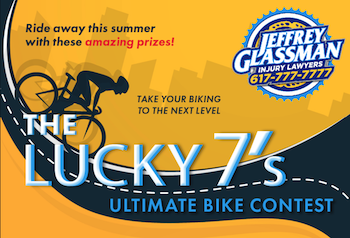Boylston Street
Boylston Street is a major east-west thoroughfare through the City of Boston. Not to be confused with the Bolyston Street that runs through the city’s western suburbs of Brookline and Newton, Boylston Street begins at Park Drive and Brookline Avenue and continues all the way through to Washington Street downtown, where it then changes to Essex Street.
The road is historically significant because it was the site of the 2013 Boston Marathon bombings that killed three civilians and injured an estimated 265.
It was identified in the Cyclist Safety Report as a common spot for Boston bicycle accidents. For this reason, it was earmarked for the Boston Complete Streets initiative, which funnels funding into urban street redesigns that make roadways safer and more accessible to pedestrians and cyclists.
At Jeffrey Glassman Injury Lawyers and BikeAttorney.com, our Boston bike injury lawyers are committed to protecting the rights and furthering the interests of cyclists struck by vehicles. In the majority of these cases, these accidents are preventable and typically caused by the negligence of motor vehicle drivers.
Some of the most common scenarios resulting in bike-related injuries, as identified in the Cyclist Safety Report, are:
- Driver crashes into cyclist while turning right
- “Dooring,” motorist or passenger opens door in path of cyclist
- Driver hits cyclist at intersection
- Driver rear-ends cyclist
A significant number of these accidents are hit-and-run, and they are especially common in the crowded Chinatown district, which is home to Emerson College on Boylston Street. It also includes the South Station on the east side. These areas are some of Boston’s busiest. That means drivers on Boylston Street who fail to pay attention for even a second have the potential to cause a serious accident and life-threatening injuries to cyclists.
The Make-Up of Boylston StreetBoylston Street runs along some of the city’s most famous landmarks. It’s home to the:
- Institute of Contemporary Art (part of the Boston Architectural College)
- Berklee College of Music
- Boston Common
- Boston Public Garden
- Boston Public Library
- Copley Square
- Emerson College
- Hynes Convention Center
- Massachusetts Historical Society
- Steinert Hall
That’s in addition to the many shops and restaurants that line the road. The MBTA Green Line has numerous connections along Boylston Street.
Because Boylston Street is one of the busier roads in the city, it has more traffic which inevitably leads to more accidents. But cyclists in particular have been at high risk because of the layout.
The biggest problem historically has been that most of the intersections along this route highly favor vehicular traffic. The speed limits are higher. There aren’t as many bike lanes or bike boxes. It also means that motorists are less likely watching for bicyclists.
The good news is city officials have been working to address these problems.
Complete Streets on Boylston StreetThe city in 2013 marked Boylston Street as one of its “priority projects” for redesign. The plan was first to establish what the existing conditions were and propose short-term solutions for serious safety problems while working toward long-tail improvements.
Right away, the city indicated it needed to prioritized right-of-way reconstruction projects in order to improve conditions for all road users, but especially pedestrians and bicyclists. Boylston Street was marked for $12.5 million in roadway improvements, which include:
- Create two 5-foot bicycle lanes
- Create two 8-foot parking lanes
- Expand sidewalk widths to 19 inches on sides with no parking and up to 30 inches using private property
- Plant up to 55 trees on public property
- Create 54-inch long crosswalks
The goals are to preserve on-street parking to support retail, while still making the road usable for motor vehicles and safe for cyclists with on-street bike lanes for local and regional connections.
A block-by-block breakdown was provided to outline the plan.
One of the primary focuses is Boylston Street, Fenway. According to BostonCompleteStreets.org, the area between Fenway Park and Longwood Medical Area was made a top priority. This area has traditionally been a mix of vehicle-oriented uses, such as gas stations, motels, fast-food restaurants and neighborhood convenience stores. Now, though, the hope is the redesign will attract street-level restaurants and cafes and upper-story office spaces and housing. This means incorporating wider sidewalks, more street trees and bicycle lanes.
The city is responsible for the design, while the state is providing the funding.
Hubway on Boylston StreetOne of the elements that is also turning Boylston into a more bicycle-friendly street is the increased presence of the Hubway bike-sharing system along the route.
As of 2016, there were three Hubway stations along Boylston Street, including:
- Landmark Center, 583 Boylston Street
- Boylston Street and Massachusetts Avenue Hubway
- Boylston Street at Washington Street
Between July 2011, when Hubway launched, and March 2016, there were nearly 4 million Hubway trips taken. New stations are being opened yearly.
The Hubway location at Boylston Street and Mass Ave. offered the first bicycle helmet vending machine (coined, “Helmethub”) in the city.
Helmets have been proven to significantly reduce the risk of serious injury and death in the event of a bicycle accident in Boston.
Contact the Boston Bicycle Accident Lawyers at Jeffrey Glassman Injury Lawyers and BikeAttorney.com at 617-777-7777.
 Jeffrey Glassman Injury Lawyers Home
Jeffrey Glassman Injury Lawyers Home